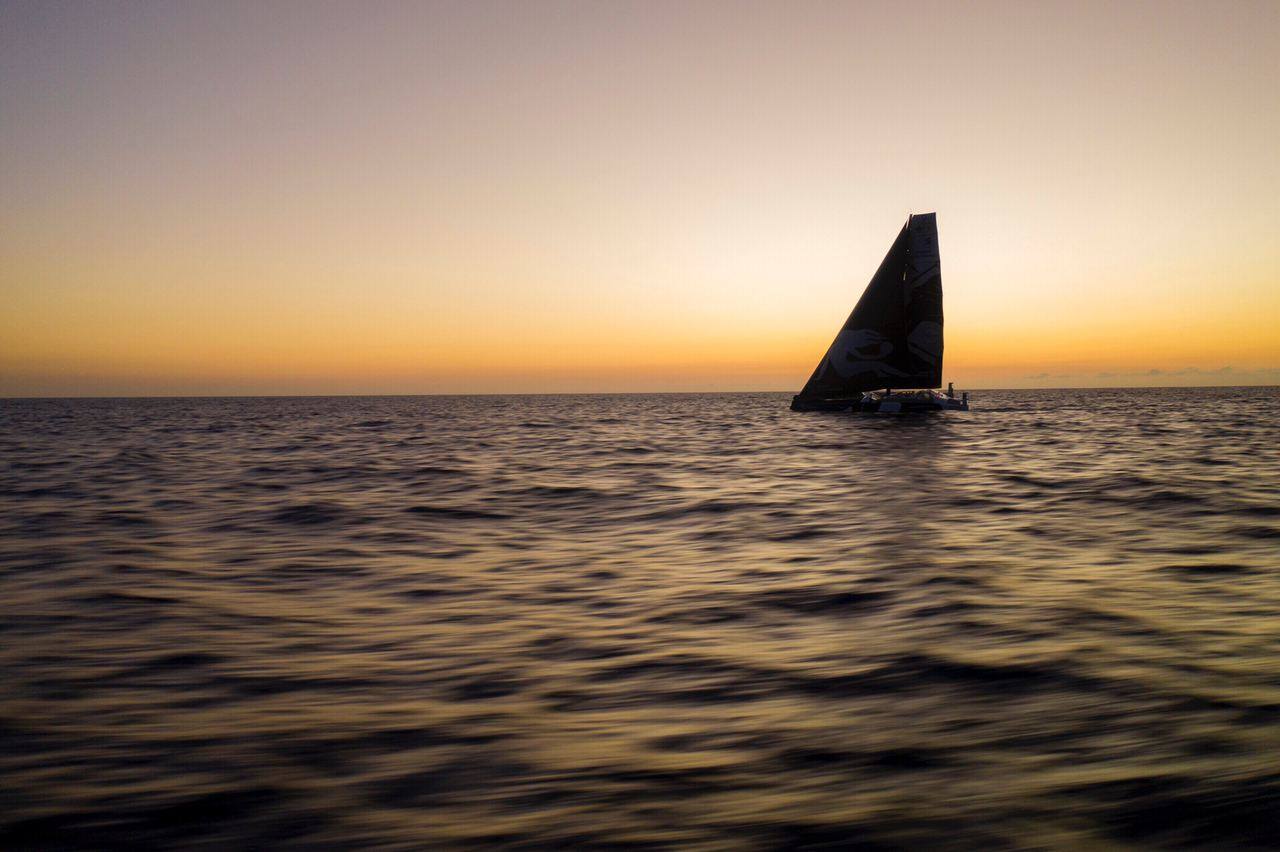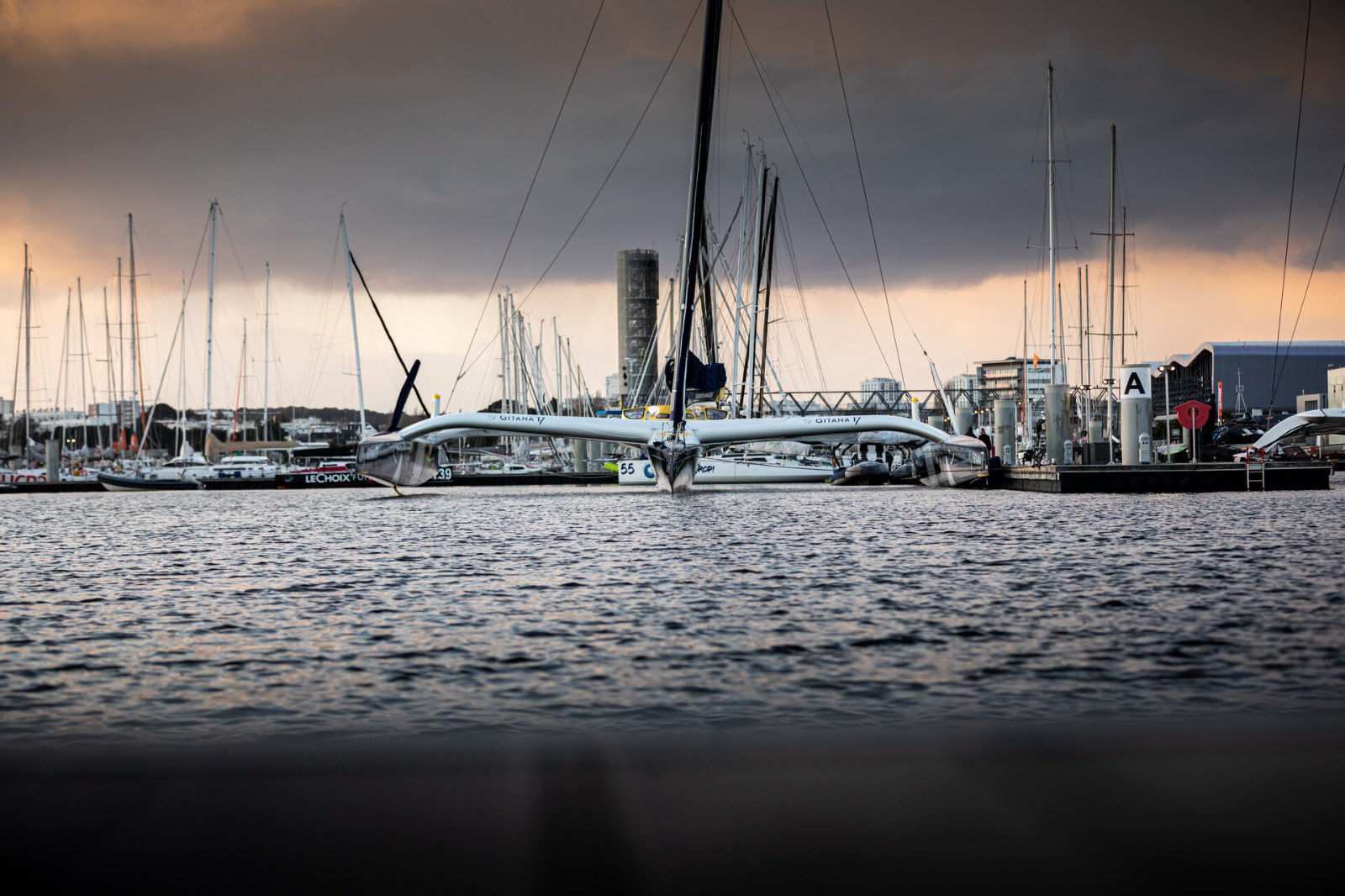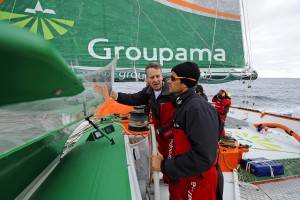Exactly one week on from the first weather window, which was ultimately rejected, the crew of the Maxi Edmond de Rothschild has seen another departure opportunity taking shape offshore of Ushant from late in the day on Tuesday. As such, this morning, in agreement with their onshore router Marcel van Triest and Cyril Dardashti, the director of the five-arrow racing stable, Franck Cammas and Charles Caudrelier have triggered code orange among their crew and Gitana Team.
“This looks like a promising window with a very fine passage time to the equator for the moment. The idea is to set sail from the north-west tip of Brittany once an Atlantic front has rolled through. The coming days will enable us to adjust this target window, but today we’re aiming at crossing the start line on Tuesday night through into Wednesday,” confided Charles Caudrelier.

This information is naturally intended to be viewed simply as a possibility. Indeed, the episode last week, which saw a deterioration in the target departure window, serves as a reminder of this. In terms of weather and the record hunting, things can change very quickly in one direction or another. As a result, through until the point where the virtual start line is crossed offshore of Le Créac’h lighthouse, on the island of Ushant, the men of Gitana Team may well decide to postpone their departure and turn back.
“This launch window is one of the only things we can really choose in this record attempt so we’re putting in every effort to get it right. This choice has implications for the first third of the course, through until the Cape of Good Hope, which is already a very sizeable chunk. It’s a long way, as we’re talking about a forecast of over 10 days, but this does come into play in our departure criteria. We’re after optimum conditions to have a manageable departure, a quick trajectory towards the equator and then the right timing to hook onto a train of depressions in the South Atlantic. This is the sequence we’re targeting,” explained Franck Cammas.
It’s worth noting that Gitana 17, which has been on standby in Lorient since 1 November, will be tackling her very first Jules Verne Trophy with six sailors aboard, including the two skippers of the Maxi Edmond de Rothschild. In this attempt to break the record of 40 days 23 hours and 30 minutes, held by Francis Joyon and the men of Idec Sport since 2017, Franck Cammas and Charles Caudrelier will be accompanied by Morgan Lagravière, Yann Riou, Erwan Israël and David Boileau.



